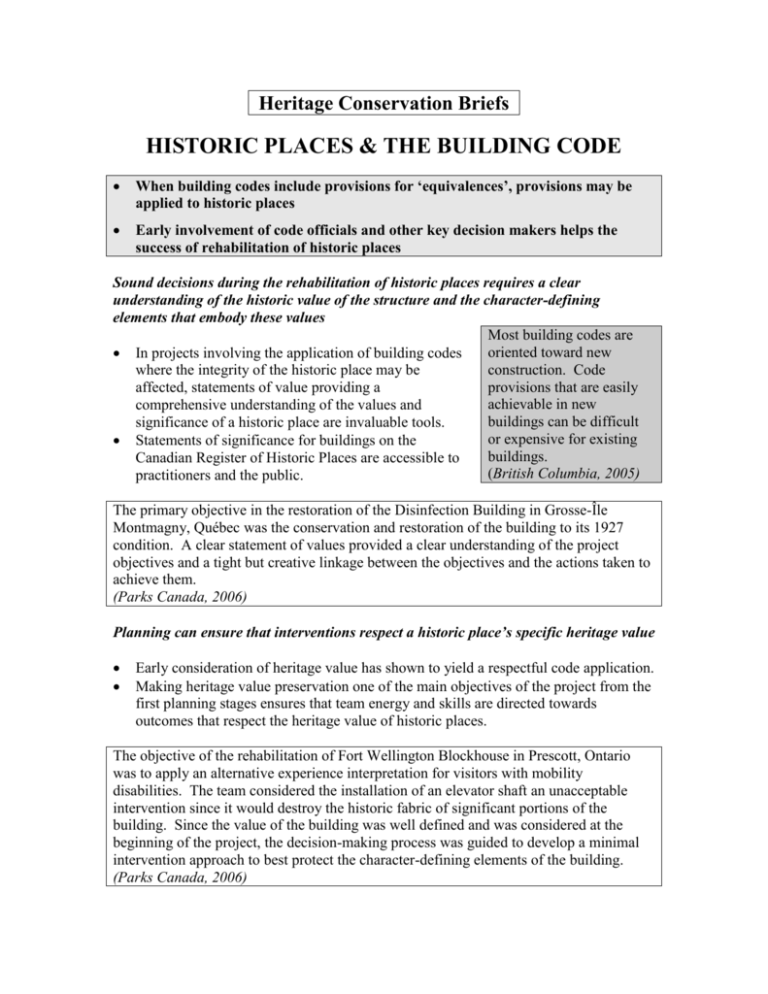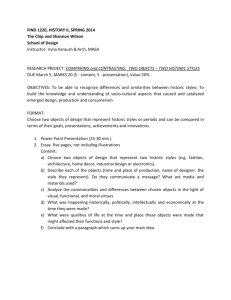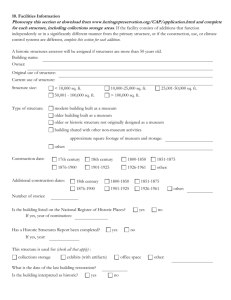Building code
advertisement

Heritage Conservation Briefs HISTORIC PLACES & THE BUILDING CODE When building codes include provisions for ‘equivalences’, provisions may be applied to historic places Early involvement of code officials and other key decision makers helps the success of rehabilitation of historic places Sound decisions during the rehabilitation of historic places requires a clear understanding of the historic value of the structure and the character-defining elements that embody these values Most building codes are oriented toward new In projects involving the application of building codes construction. Code where the integrity of the historic place may be provisions that are easily affected, statements of value providing a achievable in new comprehensive understanding of the values and buildings can be difficult significance of a historic place are invaluable tools. or expensive for existing Statements of significance for buildings on the buildings. Canadian Register of Historic Places are accessible to (British Columbia, 2005) practitioners and the public. The primary objective in the restoration of the Disinfection Building in Grosse-Île Montmagny, Québec was the conservation and restoration of the building to its 1927 condition. A clear statement of values provided a clear understanding of the project objectives and a tight but creative linkage between the objectives and the actions taken to achieve them. (Parks Canada, 2006) Planning can ensure that interventions respect a historic place’s specific heritage value Early consideration of heritage value has shown to yield a respectful code application. Making heritage value preservation one of the main objectives of the project from the first planning stages ensures that team energy and skills are directed towards outcomes that respect the heritage value of historic places. The objective of the rehabilitation of Fort Wellington Blockhouse in Prescott, Ontario was to apply an alternative experience interpretation for visitors with mobility disabilities. The team considered the installation of an elevator shaft an unacceptable intervention since it would destroy the historic fabric of significant portions of the building. Since the value of the building was well defined and was considered at the beginning of the project, the decision-making process was guided to develop a minimal intervention approach to best protect the character-defining elements of the building. (Parks Canada, 2006) A well-informed team is fundamental to the application of building codes to historic places Flexibility in the application of the building code requires that code authorities are made familiar with the values of the historic place and are involved in decisionmaking at an early planning stage. Code specialists should be hired to explain the intent of the code to the decisionmaking team and to help find safe, acceptable alternatives to standard code applications. The purpose of the rehabilitation of Centre Des Sciences in Montréal, Québec was to convert it into a museum. The fire protection code requirements meant the covering up of the main feature for which the building is valued. A building code consultant was able to demonstrate that the existing structure lends the building a fire-resistance rating of equal or greater value than the application of fire-resistant requirements. The assistance of the code specialist helped code authorities feel comfortable with a flexible balance between the preservation of heritage value and public safety. (Parks Canada, 2006) Regular communication and site visits greatly benefit the code compliance decision-making process Regular and clear communication is essential in ensuring respectful decision-making. Regular meetings help encourage creative and integrated thinking. Site visits for all decision-makers and on-site discussion are essential for achieving a suitable balance between code compliance and heritage conservation goals. Involving code authorities early and throughout the decisionmaking process can also help increase their understanding of heritage value and can increase their flexibility. (Parks Canada, 2006) Meeting code requirements for the rehabilitation of Monument National in Montréal, Québec would have meant the demolition of the monumental wood stairs, an important architectural feature. An on-site meeting with all fire and code authorities allowed municipal authorities to understand the importance of keeping the stairs and agree to an alternative means of meeting code requirements. (Parks Canada, 2006) Resources Bouffard-Lima, C. and C. Lefebvre. 2006. Study on the Application of Building Codes to Historic Places. Historic Places Program Branch, National Historic Sites Directorate, Parks Canada. Hlavach, J. 2005. Exploring Building Code Requirements and Their Application to Existing Buildings: A Cross-Jurisdictional Review. British Columbia Ministry of Community, Aboriginal and Women’s Services.









